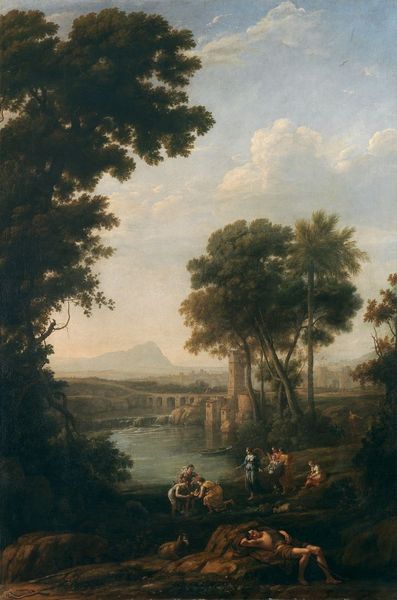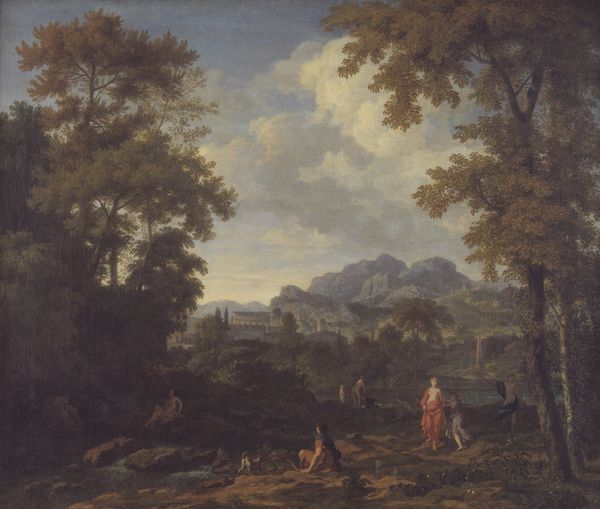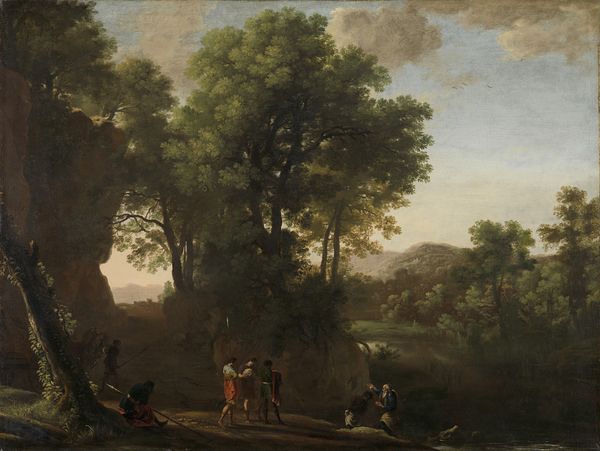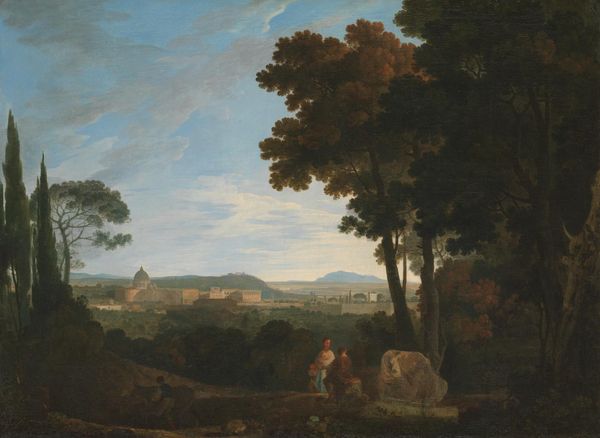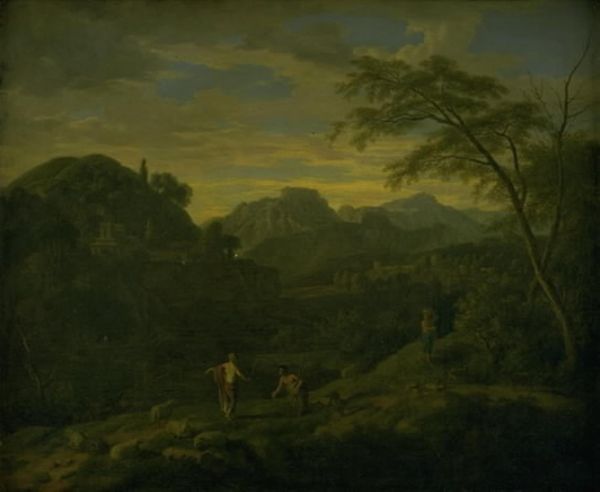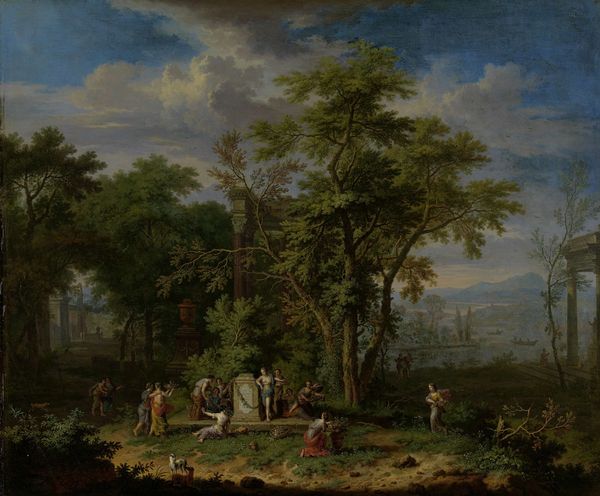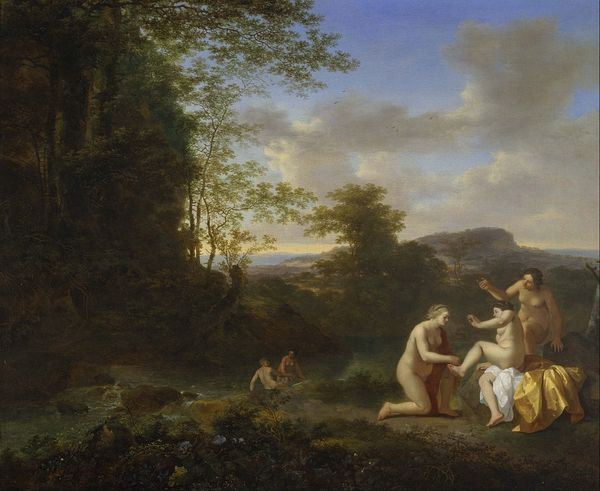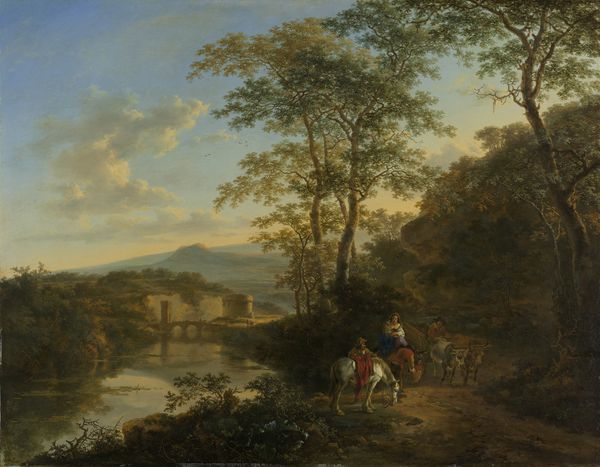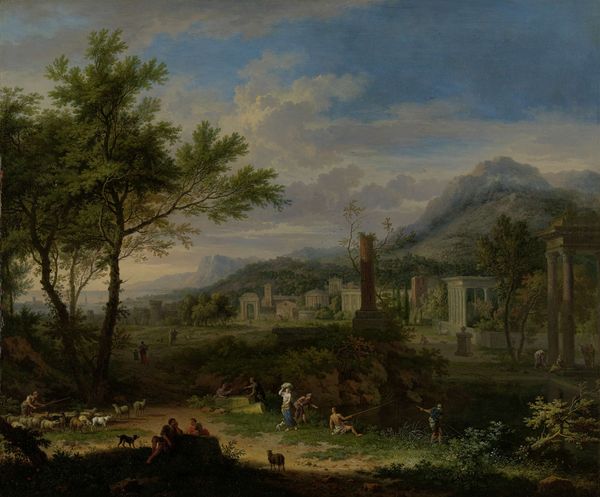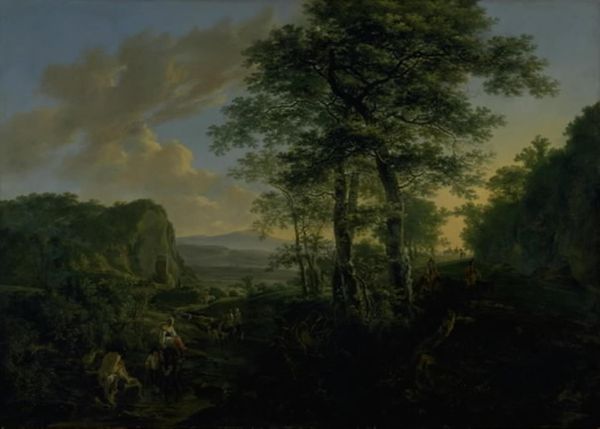
Classical Landscape with Diana (?) and her Nymphs 1683 - 1686
0:00
0:00
painting, oil-paint, canvas
#
allegory
#
baroque
#
painting
#
oil-paint
#
landscape
#
classical-realism
#
figuration
#
oil painting
#
canvas
#
underpainting
#
history-painting
#
academic-art
Dimensions: 104.9 cm (height) x 120.8 cm (width) x 7.1 cm (depth) (Brutto), 70 cm (height) x 85 cm (width) (Netto)
Curator: Looking at this piece, the overall impression is one of a dreamy, slightly melancholic Arcadia, isn’t it? There's a softness to the light that bathes the entire scene. Editor: Indeed. We're currently viewing "Classical Landscape with Diana (?) and her Nymphs," an oil on canvas by Johannes Glauber, created between 1683 and 1686. It currently resides here at the SMK, the National Gallery of Denmark. The painting seems rooted in classical idealism. How does the depiction of the figures relate to this landscape in your view? Curator: The figures certainly feel secondary, almost absorbed by the setting. Perhaps reflecting humanity's place within the broader, indifferent scope of nature. I imagine Glauber drawing upon earlier art historical narratives of male voyeurism. The drama, if you can call it that, feels deeply staged and conventional. Do you get that sense? Editor: Absolutely. The entire arrangement feels deliberate. Like characters enacting a story we only vaguely know. I'm drawn to the underpainting actually. It creates a gorgeous sense of depth behind the figures that you mention and really pops when viewed up close! It is hard to say which mythological story Glauber alludes to; maybe he is more interested in how the human subject experiences that myth through the landscape that surrounds them. Curator: That's perceptive. There is certainly an air of ambiguity surrounding the narrative itself. Focusing on individual experiences makes a lot of sense in relation to baroque period concerns, even through it employs the classical themes you rightly notice. Even if somewhat conventional by modern standards, the work feels rooted in an intersection of social, historical, and even art historical anxieties, such as we see reflected in seventeenth-century academic practice. Editor: Thinking about these anxieties reminds me that there’s almost a dreamlike detachment in the way the characters move, with gestures more illustrative than deeply felt. I am touched by this mood in the piece, even if it doesn’t overwhelm with an overblown theatricality like a Rubens. In essence, that soft ambiguity in its theme is what gives the work a sense of longevity! Curator: I think I concur with you! Looking at it this way really underscores a point on artistic intentions of that period as well as an approach we should use today when grappling with any historical painting!
Comments
No comments
Be the first to comment and join the conversation on the ultimate creative platform.
